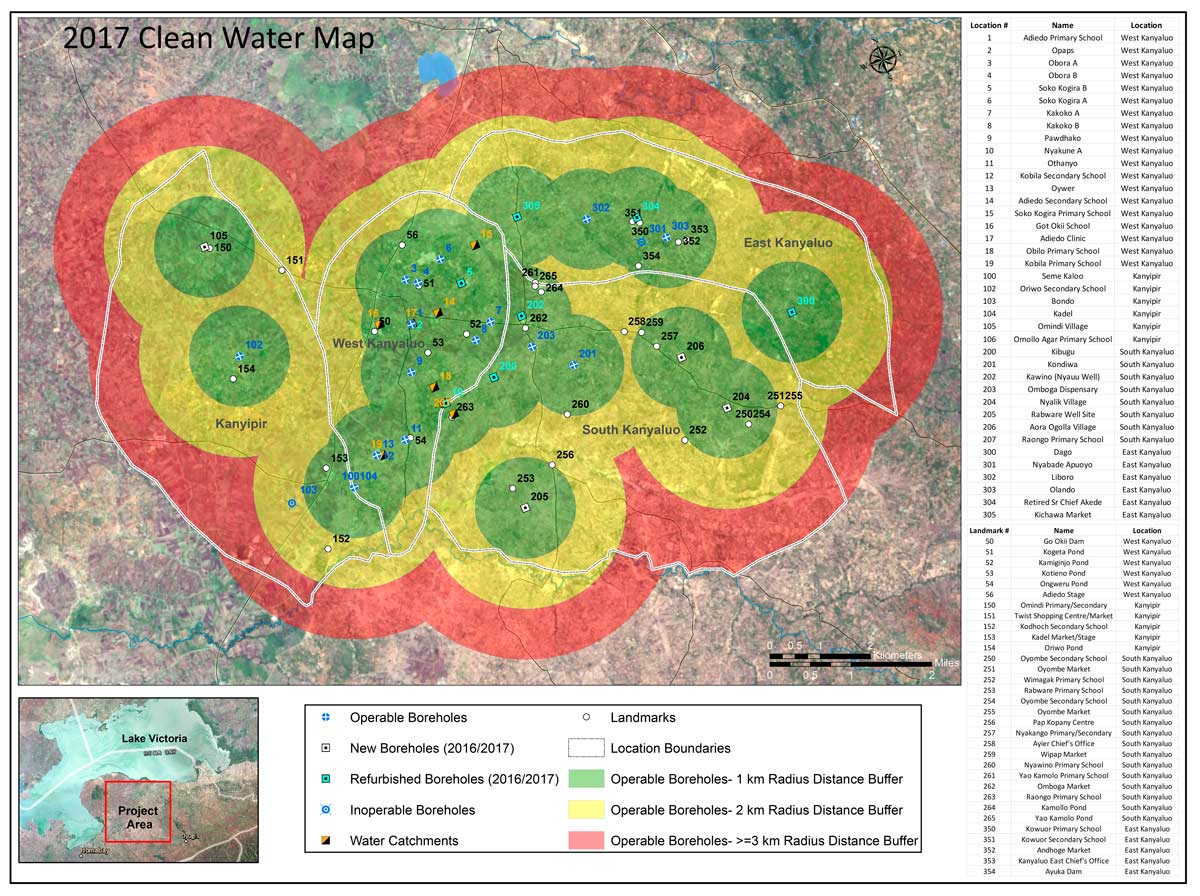Clean Water
The phrase “Water is Life” is far more true than most Americans can comprehend. Water-borne disease and death are common facts of life in the Karachuonyo region of Kenya since the most available sources of water are highly polluted ponds and rivers.
SOHI partners with the community to establish long-lasting clean water sources that are sustainable by the local people.
Clean water is most cost effectively found from these sources:
Drilled Wells
A large supply of clean water is available from an aquifer 300 ft below the ground level through volcanic rock; meaning a mechanically drilled well is needed. Thus, this life-giving resource is unavailable to the people without help. SOHI partners with the community to drill and refurbish wells. Typically, each well drilled is equipped with a manually operated hand pump. It provides reliable year-round clean water for approximately 600 people. The cost of drilling, testing, permitting a well is approximately $20,000.
To ensure sustainability, a well committee of local individuals is formed for each well. This group is trained on the operation, maintenance, and repair of the pump prior to SOHI turning it over to the community. The well committee monitors the use of the well and charges a very small amount of money for water taken. This money is accumulated such that within 3 year’s time, enough has been saved to afford purchase of a rebuild/repair kit for the pump. Thus, the people using the well can keep it in good operating condition without continual assistance from outside sources (aka, it’s sustainable). It should be noted that no one is refused water from a SOHI drilled well; if a family cannot afford the small use charge, they are allowed to work for the water taken.
Rainwater Catchment
The region has two rainy seasons and two drought seasons per year. Rainwater collected as runoff from roofs is a good source of clean water in developing nations. This is accomplished through rain gutters routing water from a metal roof to a large (typically 10,000L) plastic tank. This approach is not applicable to most individual houses for various reasons, but is a good source for institutional facilities such as schools and medical clinics; these facilities need ready access to clean water for the health of children and patients. A sufficiently sized system will generally supply sufficient clean water to see a school or clinic through the drought season. A typical rainwater catchment system costs approximately $5,000.
Health & Sanitation Training
Equally critical to health improvements is sanitation. SOHI provides resources for such items as latrines, girls’ sanitary products, as well as teaching basic sanitation principals at the schools and to well committees. These actions have already made a significant difference in the areas where they have been done. However, much work remains.
Biosand Filters
About 27,500 people in our region in Kenya do not have access to clean water within a 1km walking distance. As a result, these people resort to drinking water from disease-infested water from ponds and rivers. As SOHI continues to raise funds to drill more wells, we also provide training and build infrastructure for a small, community-owned facility that manufactures biosand filters.
Clean Water Updates
These are the most recent updates to our mission to give the people of Kenya clean water.
Approach to Clean Water In the Karachuonyo Region – February 2018
1.0 Introduction Spring of Hope International (SOHI) is a 501.C3 non-profit organization dedicated to Empowering …




